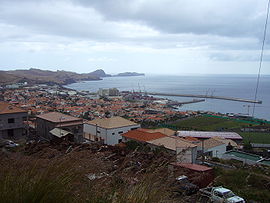
Funchal is the largest city, the municipal seat and the capital of Portugal's Autonomous Region of Madeira, bordered by the Atlantic Ocean. The city has a population of 105,795, making it the sixth largest city in Portugal. Because of its high cultural and historical value, Funchal is one of Portugal's main tourist attractions; it is also popular as a destination for New Year's Eve, and it is the leading Portuguese port on cruise liner dockings.

Vila do Porto is the single municipality, the name of the main town and one of the civil parishes on the island of Santa Maria, in the Portuguese archipelago of Azores. Its nearest neighbor, administratively, is the municipality of Povoação on the southern coast of São Miguel, and it is physically southwest of the islets of the Formigas. The population in 2021 was 5,408, in an area of 96.89 km2 (37.41 sq mi).
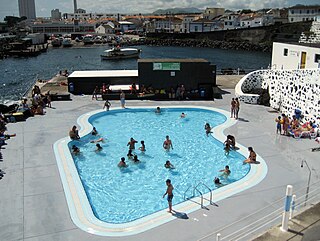
Nossa Senhora do Rosário is a civil parish and most populated area in the municipality of Lagoa, on the island of São Miguel, in the Portuguese archipelago of the Azores. With a population of 5396 inhabitants in 2011, the parish covers an area of approximately 6.52 square kilometres (2.52 sq mi) that extends from the southern coast of the island. It contains the localities Atalhada, Bairro das Socas, Nossa Senhora do Rosário, Porto dos Carneiros and Vila Mar.

Calheta is a municipality on the southwest coast of Madeira, Portugal. The population in 2011 was 11,521, in an area of 111.50 km2.
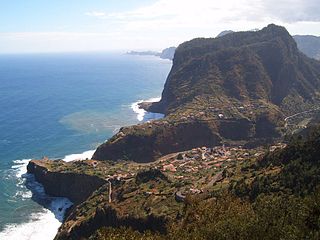
Faial is a civil parish in the Madeiran municipality of Santana located along the northern coast of the island of Madeira. The population in 2011 was 1,567, in an area of 24.03 km².

Pilar da Bretanha is a civil parish in the municipality of Ponta Delgada on the island of São Miguel, in the Portuguese archipelago of the Azores. It was de-annexed from the historical parish of Bretanha on 10 July 2002, along with Ajuda da Bretanha. The population in 2011 was 624, in an area of 6.07 square kilometres (2.34 sq mi). It contains the localities Casa Telhada, Covas, João Bom and Pilar.

Lagoa is a municipality in the southwestern part of São Miguel Island in the Azores. The population in 2011 was 14,442, in an area of 45.59 km². Lagoa is located east of Ponta Delgada, the island capital.

Água de Pau is a civil parish in the municipality of Lagoa in the Portuguese archipelago of the Azores. The population in 2011 was 3,058, in an area of 17.46 km². It contains the localities Água de Pau, Caloura, Cerco, Cinzeiro, Galera and Jubileu.

Machico is a municipality, parish and city in the southeast part of the island of Madeira, in the Autonomous Region of Madeira. The easternmost municipality on the island, it is also the third-most populous area with a population of 21,828 in 2011. The town, proper, had a population of 10,894 in 2001.

Água de Pena is a civil parish in the municipality of Machico on the south-east coast of the Portuguese island of Madeira. The population in 2011 was 2,434, in an area of 5.15 km².

Porto da Cruz ([ˈpoɾtu ðɐ ˈkɾuʃ], is a civil parish in the municipality of Machico in the northeastern corner of Madeira. The population in 2011 was 2,597, in an area of 25.22 km².
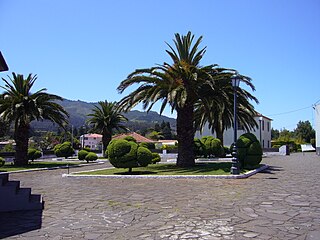
Santo António da Serra is a civil parish in the interior of the municipality of Machico, on the island of Madeira. The parish is adjacent to another parish in the neighbouring municipality of Santa Cruz to the south, which is also named Santo António da Serra. The population in 2011 was 1,617, in an area of 8.62 km².
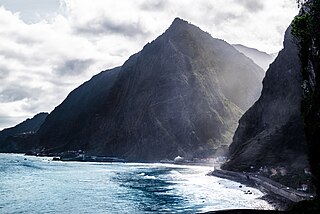
São Vicente is a municipality along the north-west coast of the island of Madeira.
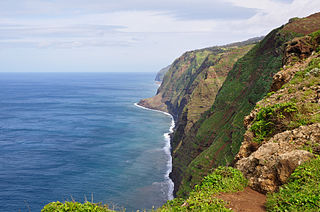
Ponta do Pargo is a civil parish in the municipality of Calheta in the Portuguese island of Madeira. The population in 2011 was 909, in an area of 24.71 km2. It is located west of the municipal seat of Calheta, and southwest of the municipality of Porto Moniz.

Santa Maria Maior is a civil parish in the eastern part of the municipality of Funchal on the island of Madeira. The population in 2011 was 13,352, in an area of 4.86 km2.

São Gonçalo is a freguesia parish in the municipality of Funchal, located near the south coast of the island of Madeira, in Portugal.
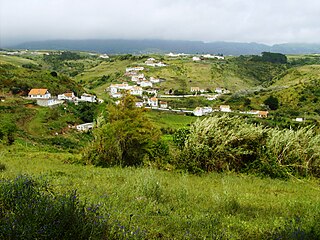
Vila do Porto is a civil parish in the municipality of Vila do Porto, located on the island of Santa Maria, in the Portuguese autonomous region of Azores. It is the southernmost and easternmost parish in the archipelago of Azores. The population in 2011 was 3,119, in an area of 25.55 km².

Frechas is a Portuguese civil parish, located in the municipality of Mirandela, in the district of Bragança. The population in 2011 was 929, in an area of 18.54 km².

Terra Chã is a civil parish in the municipality of Angra do Heroísmo on the island of Terceira in the Portuguese Azores. The population in 2011 was 2,915, in an area of 10.07 km2.
